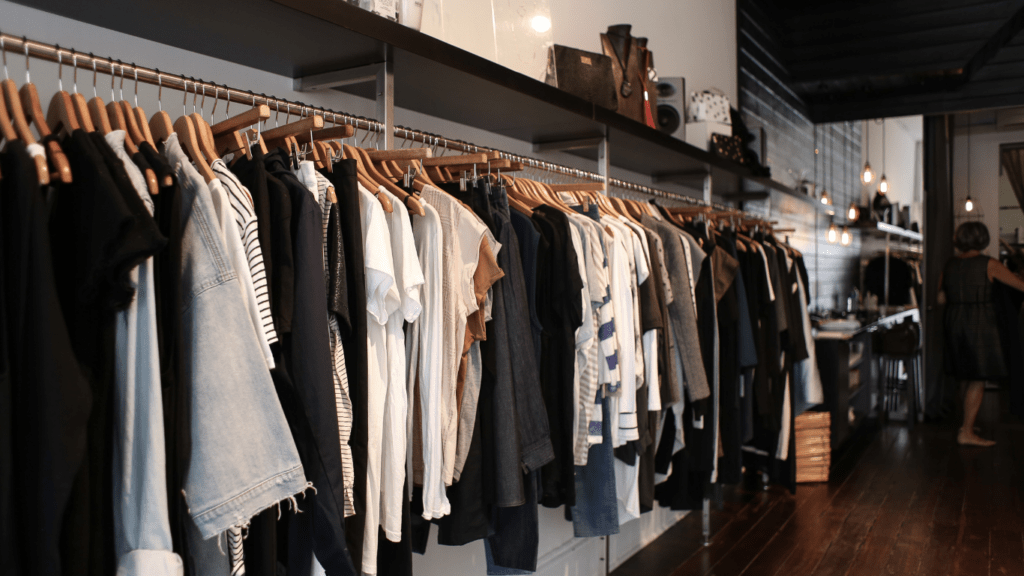What Is Upcycling?
Upcycling transforms old clothes into new treasures. This creative process extends the life of garments, offering unique and sustainable fashion options.
The Basics of Upcycling Clothing
Upcycling, unlike recycling, doesn’t break down materials. Instead, it creatively repurposes them. For clothing, this might involve altering, embellishing, or combining items.
Examples include:
- turning jeans into shorts
- adding patches to jackets
- sewing vintage buttons on shirts
Upcycling uses your imagination and basic sewing tools.
Environmental and Economic Benefits
Upcycling reduces textile waste, which accounts for 85% of landfill trash. By reusing clothing, we cut down on the need for new resources. The environmental impact of upcycling is significant as it conserves water and energy.
Economically, upcycling saves money. Instead of buying new clothes, you can refresh your wardrobe at no extra cost. Examples of economic benefits include creating an upcycled outfit from thrift store finds.
Creative Ideas for Upcycling Old Clothes
Upcycling offers countless ways to transform outdated or damaged clothes into stylish, functional items. Here are some innovative approaches to repurposing old garments.
No-Sew Projects
No-sew projects make upcycling accessible to everyone, requiring no sewing skills. Refresh old t-shirts by converting them into reusable tote bags. Cut off sleeves and use fabric glue to seal the edges.
Create infinity scarves by trimming and fringing the bottom edges of old shirts. Transform jeans into fashionable shorts by cutting them to your desired length and distressing the hem. Decorate with fabric paint or iron-on patches.
Simple Sewing Projects
With basic sewing skills, the possibilities expand further. Turn old sweaters into cozy mittens by tracing a mitten pattern on the fabric and sewing the pieces together. Create stylish patchwork quilts using fabric squares from different clothes.
Convert large t-shirts into fitted tees by tailoring the sides and adding darts. Sew fabric scraps into hair accessories like scrunchies or headbands.
Tools and Materials Needed
Upcycling old clothes into new treasures requires specific tools and materials to make the process smooth and enjoyable. Here’s a guide to get you started.
Essential Equipment for Beginners
Beginners need basic tools to begin upcycling projects. A good pair of fabric scissors ensures clean cuts. Needles and various types of thread suit different fabrics.
A seam ripper helps remove seams without damaging the fabric. Measuring tape provides precise measurements.
A sewing machine is invaluable for more complex projects. For no-sew projects, fabric glue and iron-on hem tape come in handy. Pins and clips hold fabric pieces together during sewing or gluing.
Recommended Fabrics and Accessories
Different fabrics suit different projects. Cotton is versatile for most upcycling tasks, making tote bags and scarves. Denim works well for creating sturdy items like bags or patches. Sweaters, especially wool, can be repurposed into mittens or quilts.
Accessories add a unique touch to upcycled items. Buttons, zippers, and snaps refashion clothes with functional embellishments. Patches and appliqués provide decorative elements. Lace and ribbons introduce vintage or playful accents to garments.
Step-by-Step Guide to Upcycling a T-Shirt
Upcycling an old T-shirt can create an exciting and unique piece of clothing. Here’s how you can transform that old tee into something new.
Planning Your Design
- Choose a Design: Decide what you want to create. Options include crop tops, tote bags, or decorative pillows. Think about the end product’s functionality and style.
- Gather Inspiration: Look at fashion blogs, Pinterest, and DIY sites for ideas. Keep a list of designs that inspire you.
- Sketch It Out: Draw your design on paper. This visual guide will help you stay on track as you work.
Execution Tips
- Cut Carefully: Use fabric scissors to make precise cuts. This maintains the T-shirt’s integrity and prevents fraying.
- Pin Before Sewing: Position pins along seams before sewing. This ensures accuracy and keeps the fabric from shifting.
- Use the Right Stitch: For stretchy T-shirt fabric, use a stretch stitch or zig-zag stitch if you’re using a sewing machine. This accommodates the fabric’s natural stretch.
- Add Embellishments: Attach buttons, patches, or lace to your design. These small touches can make your upcycled item unique.
The completed section provides practical steps and a clear process for upcycling a T-shirt, maintaining coherence with the overall theme of the blog post.
Showcasing Your Upcycled Creations

After transforming your old clothes into new treasures, showcasing these unique pieces can be incredibly rewarding. Here, I’ll explore a few ways to share your upcycled creations with the world.
Organizing a Home Fashion Show
Organizing a home fashion show offers a wonderful platform to display your upcycled items. Start by setting up a runway in a spacious area of your home. Invite friends and family to participate as models, or model the creations yourself.
Ensure there’s ample lighting to highlight the details of each piece. To create a professional feel, use a backdrop that complements the theme of your upcycled garments.
Plan in advance by selecting a diverse range of outfits to showcase. Consider creating a program or playlist to enhance the show’s atmosphere.
Document the entire event through photos and videos—these can be later shared on social media or saved as a personal keepsake.
Sharing on Social Media
Social media provides an excellent avenue to reach a broader audience with your upcycled creations. Start by taking high-quality photos of each item.
Use natural lighting to capture the textures, colors, and details of the fabric. Platforms like Instagram or Pinterest work well for visual content, while Facebook allows for longer descriptions and storytelling.
Consistency is key. Post regularly and engage with your audience by sharing the process behind each piece. Use relevant hashtags like #Upcycling, #SustainableFashion, and #DIYFashion to increase visibility.
Connecting with online communities focused on sustainability and fashion can also enhance your reach. Host live sessions to demonstrate your techniques or launch your pieces, creating interactive experiences for followers.


 is a passionate advocate for organic farming and sustainability, contributing extensively to Eco Elegance Technique. With a deep understanding of sustainable agricultural practices, Steveno has focused his career on educating others about the environmental benefits and challenges of organic farming. His work emphasizes the importance of soil health, biodiversity, and ethical farming practices. Steveno’s insights have helped shape the platform’s commitment to promoting eco-friendly solutions in the beauty and fashion industries.
is a passionate advocate for organic farming and sustainability, contributing extensively to Eco Elegance Technique. With a deep understanding of sustainable agricultural practices, Steveno has focused his career on educating others about the environmental benefits and challenges of organic farming. His work emphasizes the importance of soil health, biodiversity, and ethical farming practices. Steveno’s insights have helped shape the platform’s commitment to promoting eco-friendly solutions in the beauty and fashion industries.
